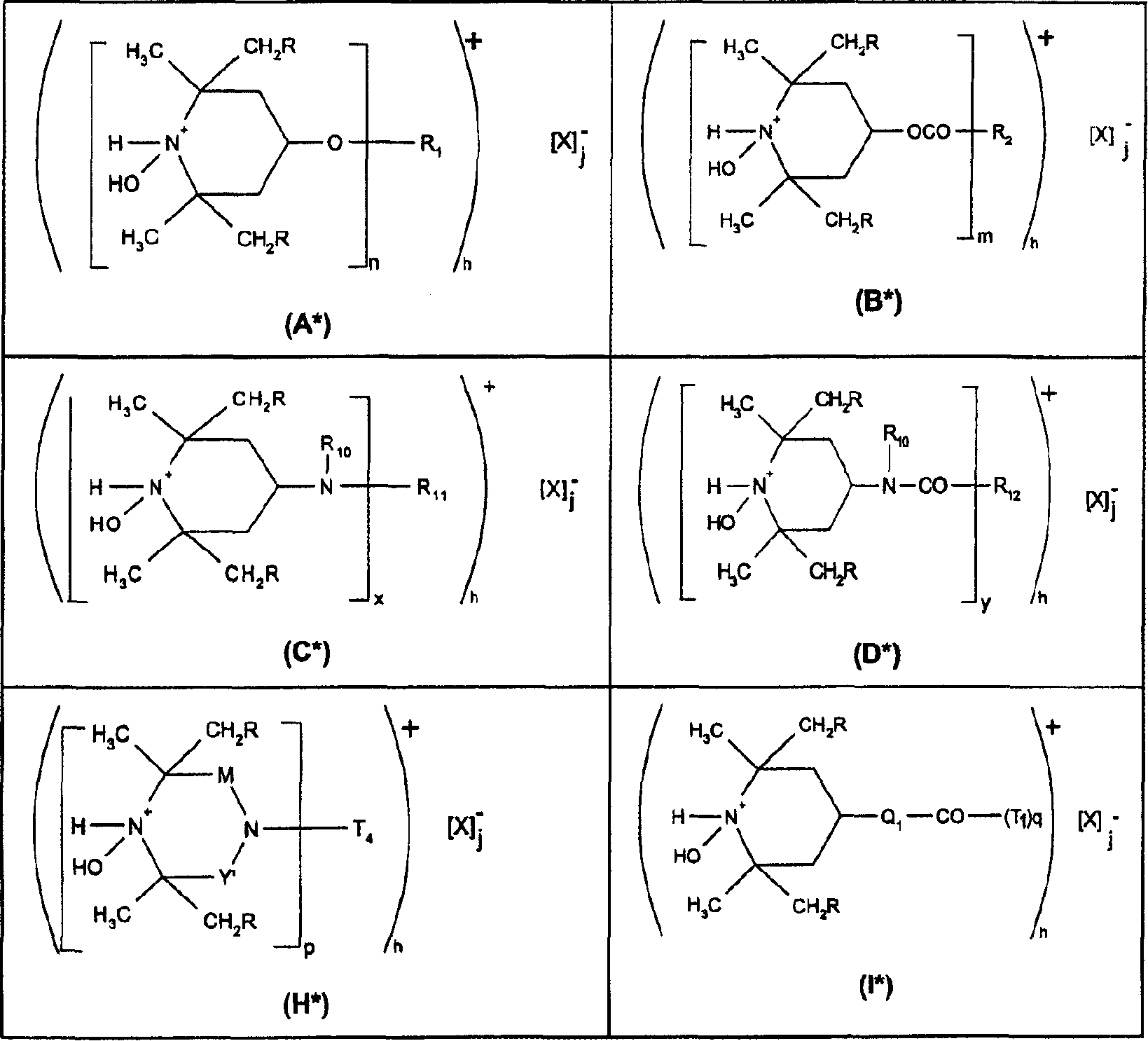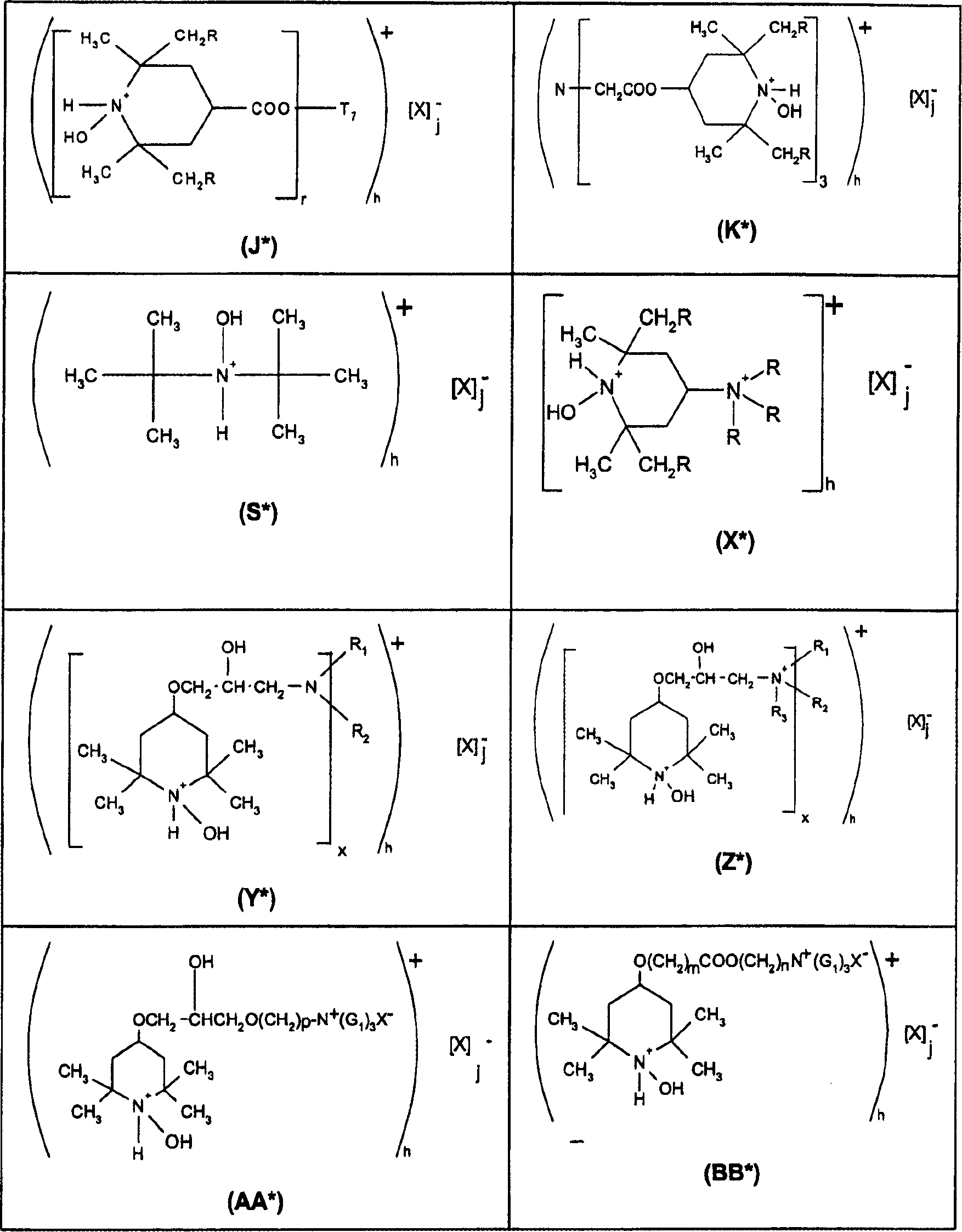Ink-jet ink and recording material
An inkjet recording material, inkjet ink technology, applied in the direction of ink, copying/marking method, application, etc., capable of solving problems such as poor light fastness, fading or discoloration
- Summary
- Abstract
- Description
- Claims
- Application Information
AI Technical Summary
Problems solved by technology
Method used
Image
Examples
Embodiment 1
[0233] Inkjet inks were prepared by dissolving 2 g of dye in 20 g of diethylene glycol and 78 g of deionized water. The dye used was Acid Red 52. 0.15g of stabilizer was weighed into a test tube and dissolved in 2.85g of ink. Ink was filtered and transferred into empty and carefully cleaned Deskjet 510 printer (Hewlett-Packard) cartridges. Then, the stair-shaped image was printed on plain paper (sihl+eika). The resulting prints were dried under vacuum at 50 °C for 2 h and subsequently irradiated behind a 5 mm thick window glass in an Atlas Ci-35 photofading unit equipped with a xenon lamp. Operate the Atlas device at 43°C, 50% RH, no dark cycle, the light intensity is 461W / m 2 (300-800nm). The color density of each step was measured with a MacBethTR 924 densitometer before and after exposure.
[0234] The results are given below with an initial density of 1. Lower loss of density values indicates higher light fastness.
[0235] Stabilizer Low density loss (%)
[0236...
Embodiment 2
[0246] Magenta and yellow inks were drawn from a Hewlett-Packard tri-color cartridge (HP C1823D). Weigh 0.15g stabilizer into a test tube and dissolve it in 2.85g magenta or yellow ink. The resulting ink was filtered and transferred to an empty and carefully cleaned Deskjet 510 printer (Hewlett-Packard) cartridge. Then, print the ladder image on plain paper (sihl+eika) or on Hewlett-Packard Premium Photo Paper (item code C6040A). The resulting prints were dried under vacuum at 50 °C for 2 h and subsequently irradiated behind a 5 mm thick window glass in an Atlas Ci-35 photofading unit equipped with a xenon lamp. Operate the Atlas device at 43°C, 50% RH, no dark cycle, the light intensity is 461W / m 2 (300-800nm). The color density of each step was measured with a MacBeth TR 924 densitometer before and after exposure.
[0247] stabilizer
30kJ.cm -2 Density loss (%)
magenta print
on plain paper
On HP Premium paper
yellow print
on ...
Embodiment 3
[0252] Canon PR-101 sheet (Canon Japan) was post-treated with cast stabilizer in water or methanol solution using a 75 micron wire wound coating rod. After drying at room temperature, the sheet thus modified was subjected to printing of a cyan (cyan) ladder image with a Canon BJC 8200 printer. The cyan dye used was C.I. Direct Blue 199. The prints thus obtained were dried in vacuum at 50 °C for 2 h, followed by forced air flow for 4 weeks. Color density was measured with a MacBeth TR 924 densitometer before and after exposure.
[0253] Stabilizer Density loss % after 28 days
[0254] no 20
[0255] Compound A (0.5g / m 2 ) 14
[0256] Compound A (1.0g / m 2 ) 14
[0257] Compound C (0.5g / m 2 ) 14
[0258] Compound C (1.0g / m 2 ) 12
[0259] Compound D (0.5g / m 2 ) 9
[0260] Compound D (1.0g / m 2 ) 4
[0261] Compound A is 1-oxy-2,2,6,6-tetramethyl-4-hydroxypiperidine.
[0262] Compound C is 1-hydroxy-2,2,6,6-tetramethyl-4-hydroxypiperidinium citrate.
[0263] Comp...
PUM
 Login to View More
Login to View More Abstract
Description
Claims
Application Information
 Login to View More
Login to View More - R&D
- Intellectual Property
- Life Sciences
- Materials
- Tech Scout
- Unparalleled Data Quality
- Higher Quality Content
- 60% Fewer Hallucinations
Browse by: Latest US Patents, China's latest patents, Technical Efficacy Thesaurus, Application Domain, Technology Topic, Popular Technical Reports.
© 2025 PatSnap. All rights reserved.Legal|Privacy policy|Modern Slavery Act Transparency Statement|Sitemap|About US| Contact US: help@patsnap.com



